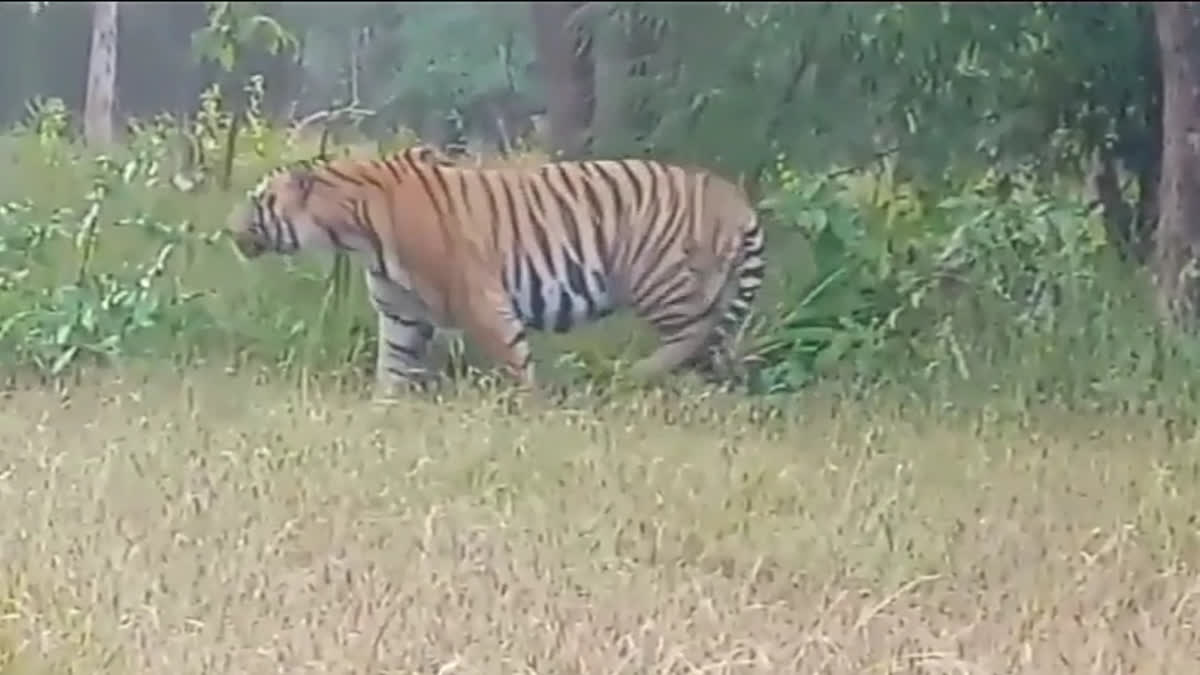Sagar: Veerangana Durgavati Tiger Reserve, which encompasses a vast area of 2,339 square kilometers and is located approximately 20 kilometers from Madhya Pradesh capital Bhopal, will keep an eye on its tigers through 650 trap cameras. The idea is to keep poachers at bay and track its big cats for proper conservation.
Madhya Pradesh accounts for the highest tiger population in the country. Among approximately 3,800 big cats, which in the wild in India, 785 of them are in the state. Named after 'Veerangana Durgavati', the queen of Gondi people, this tiger reserve was declared the seventh tiger reserve in the state and 54th in the country in 2023. Spanning three districts—Narsinghpur, Sagar, and Damoh—this tiger reserve's grasslands, according to wildlife experts, are better suited for facilitating big cat conservation.
Madhya Pradesh Forest Department and WWF (World Wide Fund for Nature) are jointly conducting camera scan. The Tiger Reserve is being divided into two blocks and three ranges are being camera scanned, a top official said. Dr AA Ansari, deputy director of Nauradehi Tiger Reserve, said, " "The purpose of scanning the entire tiger reserve is to keep an eye on the tiger territory and other wildlife. We have started the Phase-4 camera scan. Two blocks have been created for this. In the first block, 3 ranges have been taken, in which we have installed 650 trap cameras in Dongargaon, Nauradehi and Sarra. These trap cameras will remain installed continuously for a month. After collecting the data from there, we will install them in the remaining three ranges. WWF is helping us in this.”
Camera scans are going on in the first block of the tiger reserve and 650 trap cameras have been installed here. Tigers, their territory and movements are being monitored through these cameras. Apart from this, wildlife and biodiversity are also being studied in Nauradehi Tiger Reserve. After camera scan of one block for about a month, future plans for the management of the Tiger Reserve will be made by analysing the data obtained.
Camera scans for first time after tiger reserve status
Although camera scan is done in Phase-4 census of every Tiger Reserve. At present, camera scan is being done in the core area. Thre after, camera scan will be done in the buffer area. The core area is 1,414 sq km and the buffer area is 925.12 sq km.
In the first phase, camera trap is being done in Nauradehi, Dongargaon and Sarra range. Trap cameras have been installed for the first block from November. The process will be over on December 15. In the second block, camera trap will begin in Mohli, Jhapan and Singpur from December 30. During the phase-4, trap cameras will be installed in one block for one month.
How does a trap camera work?
Dr AA Ansari, deputy director of Nauradehi Tiger Reserve, said, "There is a grid in it. The entire tiger reserve is divided into grids. The area of one grid is two square km. We installed two cameras in each grid. Such places are identified where there is a possibility of tigers and other wildlife passing by. Trap cameras are tied on trees. The surrounding bushes are cleared."
Staff, watchmen, forest workers, officers and members of the WWF team collect data. Every week, information is downloaded in the computer and then a memory card is inserted. This is done continuously for one month, then the data obtained is sent to the State Forest Research Institute, Jabalpur for thorough analysis.



